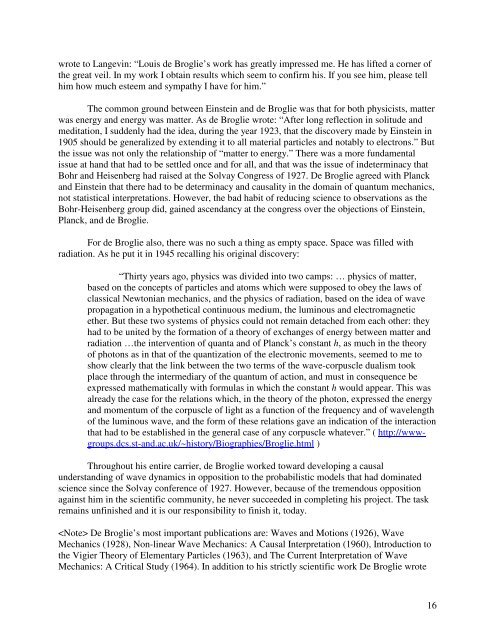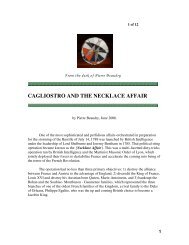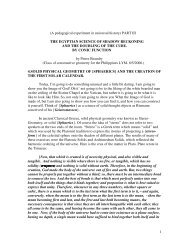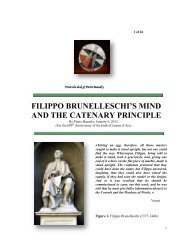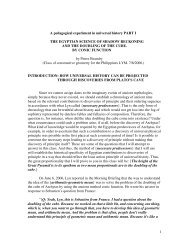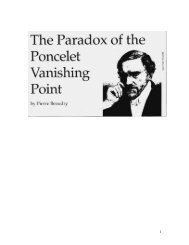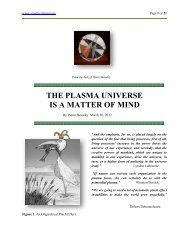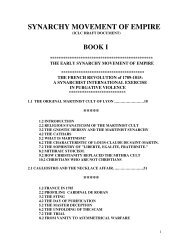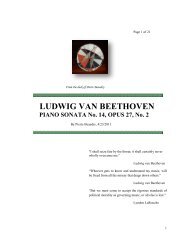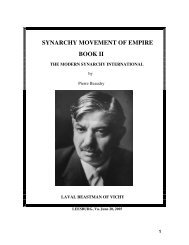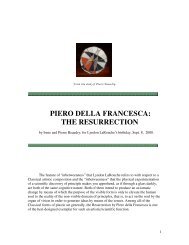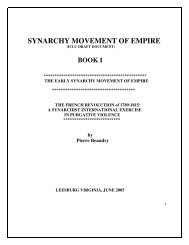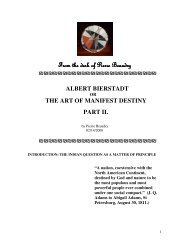LOUIS DE BROGLIE : THE WAVE AND PARTICLE PARADOX
LOUIS DE BROGLIE : THE WAVE AND PARTICLE PARADOX
LOUIS DE BROGLIE : THE WAVE AND PARTICLE PARADOX
Create successful ePaper yourself
Turn your PDF publications into a flip-book with our unique Google optimized e-Paper software.
wrote to Langevin: “Louis de Broglie’s work has greatly impressed me. He has lifted a corner ofthe great veil. In my work I obtain results which seem to confirm his. If you see him, please tellhim how much esteem and sympathy I have for him.”The common ground between Einstein and de Broglie was that for both physicists, matterwas energy and energy was matter. As de Broglie wrote: “After long reflection in solitude andmeditation, I suddenly had the idea, during the year 1923, that the discovery made by Einstein in1905 should be generalized by extending it to all material particles and notably to electrons.” Butthe issue was not only the relationship of “matter to energy.” There was a more fundamentalissue at hand that had to be settled once and for all, and that was the issue of indeterminacy thatBohr and Heisenberg had raised at the Solvay Congress of 1927. De Broglie agreed with Planckand Einstein that there had to be determinacy and causality in the domain of quantum mechanics,not statistical interpretations. However, the bad habit of reducing science to observations as theBohr-Heisenberg group did, gained ascendancy at the congress over the objections of Einstein,Planck, and de Broglie.For de Broglie also, there was no such a thing as empty space. Space was filled withradiation. As he put it in 1945 recalling his original discovery:“Thirty years ago, physics was divided into two camps: … physics of matter,based on the concepts of particles and atoms which were supposed to obey the laws ofclassical Newtonian mechanics, and the physics of radiation, based on the idea of wavepropagation in a hypothetical continuous medium, the luminous and electromagneticether. But these two systems of physics could not remain detached from each other: theyhad to be united by the formation of a theory of exchanges of energy between matter andradiation …the intervention of quanta and of Planck’s constant h, as much in the theoryof photons as in that of the quantization of the electronic movements, seemed to me toshow clearly that the link between the two terms of the wave-corpuscle dualism tookplace through the intermediary of the quantum of action, and must in consequence beexpressed mathematically with formulas in which the constant h would appear. This wasalready the case for the relations which, in the theory of the photon, expressed the energyand momentum of the corpuscle of light as a function of the frequency and of wavelengthof the luminous wave, and the form of these relations gave an indication of the interactionthat had to be established in the general case of any corpuscle whatever.” ( http://wwwgroups.dcs.st-and.ac.uk/~history/Biographies/Broglie.html)Throughout his entire carrier, de Broglie worked toward developing a causalunderstanding of wave dynamics in opposition to the probabilistic models that had dominatedscience since the Solvay conference of 1927. However, because of the tremendous oppositionagainst him in the scientific community, he never succeeded in completing his project. The taskremains unfinished and it is our responsibility to finish it, today. De Broglie’s most important publications are: Waves and Motions (1926), WaveMechanics (1928), Non-linear Wave Mechanics: A Causal Interpretation (1960), Introduction tothe Vigier Theory of Elementary Particles (1963), and The Current Interpretation of WaveMechanics: A Critical Study (1964). In addition to his strictly scientific work De Broglie wrote16


